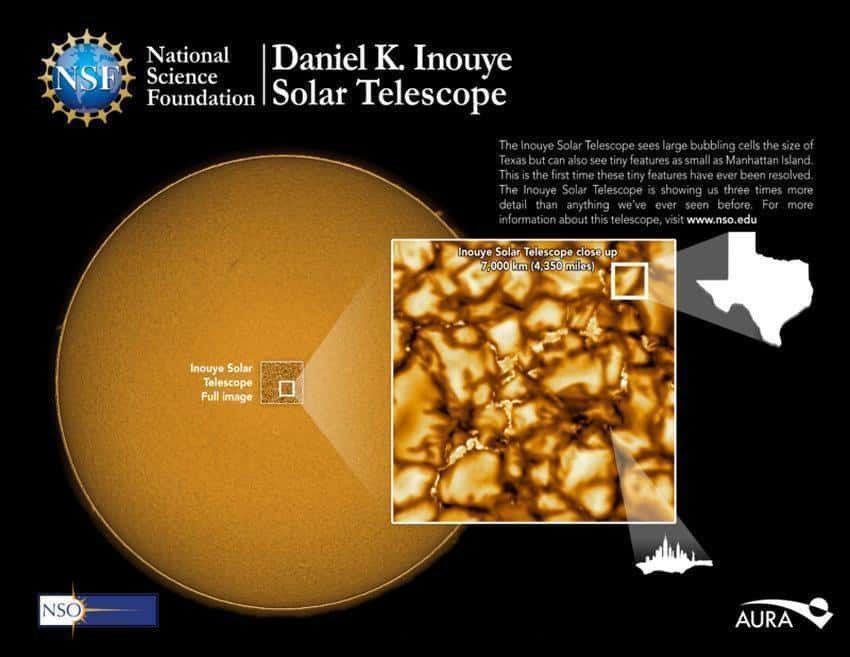The US National Solar Observatory has released the highest resolution images and videos ever taken of the Sun.

The images, collected with the solar telescope Daniel K. Inouye του National Science Foundation, δείχνουν τον Ήλιο με πρωτοφανή λεπτομέρεια, αποκαλύπτοντας χαρακτηριστικά για πρώτη φορά, που έχουν μέγεθος μόλις 30 kilometers.
The 4 meter long Inouye solar telescope is located near the top of the volcano Haleakala ("House of the Sun" in Hawaiian) on the island of Maui in Hawaii, and these incredible images of the sun is his debut in the world.
We read in statements by France Córdova, director of the National Science Foundation (= NSF): “Ever since NSF started working with this ground-based telescope, we have been looking forward to the first images. We can now share these images and videos, which are the most detailed of the Sun to date. "Αυτό This telescope will improve our understanding of what causes space weather and ultimately help us better predict solar storms."
Also, Thomas Rimmele, director of the Inouye Solar Telescope explains: “It's all about the magnetic πεδίο. Για να ξεπεραστούν τα μεγαλύτερα μυστήρια του Ήλιου, πρέπει όχι μόνο να δούμε ξεκάθαρα αυτές τις μικροσκοπικές δομές από 93 εκατομμύρια μίλια μακριά, αλλά με μεγάλη ακρίβεια να μετρήσουμε τη δύναμη και την κατεύθυνση του μαγνητικού πεδίου κοντά στην επιφάνεια και να το εντοπίσουμε καθώς αυτό εκτείνεται στην external atmosphere of the Sun".
Finally, the team also released a lot of videos. The close-ups were taken at a wavelength of 705nm, for a period of 10 minutes and show the surface of the Sun at a magnification of 30 km (18 miles) for the first time. The video shows the turbulent, superheated gas that covers the entire Sun. The cell-like structures are the size of the US state of Texas and are the signature of the violent movements that transfer heat from inside the Sun to its surface. The hot solar material (creature) rises in the bright centers of the cells, cools and then sinks beneath the surface into dark stripes.
"These first images are just the beginning," said David Boboltz, program director at NSF Astronomy. "The Inouye solar telescope during the first 5 years of its life will collect more information about our Sun than all the solar data collected since Galileo first marked the Sun with a telescope in 1612."
For most of us, the Inouye Solar Telescope means just some amazing images. But for the astronomical community, it promises to usher in "a new era of solar science and a leap forward in understanding the Sun and its effects on our planet."





